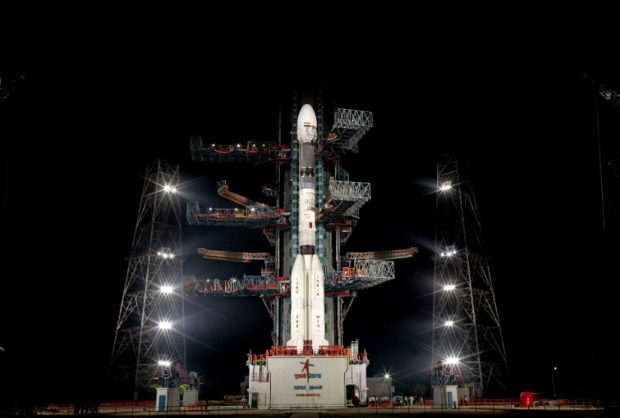
ISRO begins countdown for launch of navigation satellite
PTI, May 28, 2023, 1:09 PM IST

Image credit: Twitter / @isro
Sriharikota: Scientists at the Indian Space Research Organisation (ISRO) on Sunday commenced the 27.5-hour countdown for the launch of a navigation satellite on board a GSLV rocket here on May 29.
The Bengaluru-headquartered space agency has drawn up plans to launch a second-generation navigation satellite series which would ensure continuity of NavIC (Navigation with Indian Constellation) services.
The satellite would provide real-time positioning and timing services over India and a region approximately 1,500 km around the mainland.
The countdown for the lift-off commenced at 7.12 am on Sunday, ISRO sources said.
The 51.7-metre tall Geosynchronous Satellite Launch Vehicle, on its 15th flight, would carry the navigation satellite NVS-01 weighing 2,232 kg on Monday at 10.42 am from the second launch pad at the Satish Dhawan Space Centre (SHAR) here, about 130 km from Chennai.
Nearly 20 minutes after the flight, the rocket is scheduled to deploy the satellite in a geosynchronous transfer orbit (GTO) at an altitude of about 251 km, ISRO said.
The NVS-01 carries navigation payloads L1, L5 and S bands and in comparison to the previous one, the second-generation satellite series would also carry an indigeneously developed Rubidium atomic clock.
”The L1 navigation band is popular for providing position, navigation and timing, services for civilian users and for interoperability with other GNSS (global navigation satellite system) signals,” ISRO said.
GSLV-F12/NVS-01 Mission:
The countdown leading to the launch has commenced.Tune in for live-streaming of the
🚀 Launch of GSLV-F12/NVS-01
📆 May 29, 2023
🕝 10:15 am local timetohttps://t.co/bTMc1n8CbP https://t.co/ZX8kmMmd2Xhttps://t.co/zugXQAY0c0@DDNational @PIB_India pic.twitter.com/oCrxAgrker
— ISRO (@isro) May 28, 2023
The Rubidium atomic clock, indigenously developed by Ahmedabad-based Space Applications Centre is an important technology which only a handful of countries possess, it said.
Some of the applications of the NavIC series include terrestrial, aerial and maritime navigation, precision agriculture, location-based services in mobile devices and marine fisheries, among many others.
Monday’s mission is the sixth operational flight of the GSLV with indigenous cryogenic stage. The mission life of NVS-01 is expected to be better than 12 years, ISRO said.
Udayavani is now on Telegram. Click here to join our channel and stay updated with the latest news.
Top News
Related Articles More

Dubai flights disrupted as severe weather forces Air India and IndiGo to cancel services

Mumbai Police file FIR against unidentified person for sharing deepfake video of Aamir Khan

PM Modi sends personalised letters to NDA candidates ahead of first phase of LS polls

Aftermath of Bastar encounter: Silence in air, bullet marks on trees where 29 Maoists were killed

BJP wants to take away right to vote: Akhilesh
MUST WATCH
Latest Additions

Russia initiates withdrawal of peacekeeping forces from Karabakh as Azerbaijan takes full control of the region

Dubai flights disrupted as severe weather forces Air India and IndiGo to cancel services

Mumbai Police file FIR against unidentified person for sharing deepfake video of Aamir Khan

BJP’s Udupi candidate receives strong backing from star campaigners

PM Modi sends personalised letters to NDA candidates ahead of first phase of LS polls




















